Volcanoes are awe-inspiring, yet deadly. Throughout history, these powerful natural phenomena have caused tremendous destruction and loss of life, leaving a lasting impact on the societies they affected. Here, we take a look at ten of the deadliest volcanic eruptions in history, ranked in order of their death toll.
10- Kelud
Deaths: 10,000
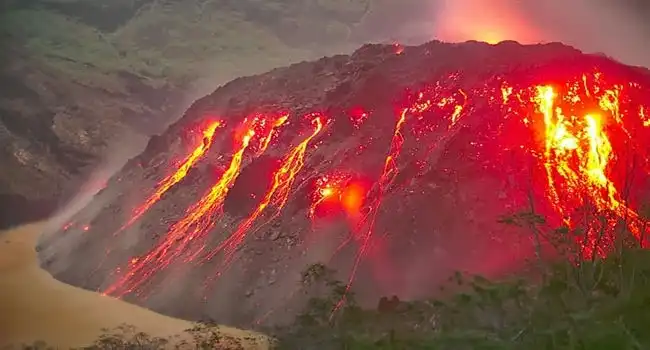
Photo Credit: History Collection
Kelud erupted with a massive force in 1586, spewing ash and stones miles into the air. The force of the eruption was so powerful that it destroyed hundreds of villages, wiping out an entire population of over 10,000 people. The explosion was so loud that it could be heard hundreds of miles away. The ash and stones that spewed out of the volcano blocked out the sunlight, plunging the region into darkness. The eruption created a massive mudflow that flooded the surrounding areas, leaving behind a thick layer of mud that buried villages and farms.
The ash and stones that were ejected also created deadly lightning storms that caused extensive damage to nearby buildings and structures. In the aftermath of the eruption, survivors faced a landscape of destruction and disease. The flow of ash and mud into rivers and streams caused a widespread outbreak of cholera, which killed thousands more. To this day, Kelud remains one of the deadliest volcanic eruptions in history.
9- Laki & Grimsvotn
Deaths: 10,000
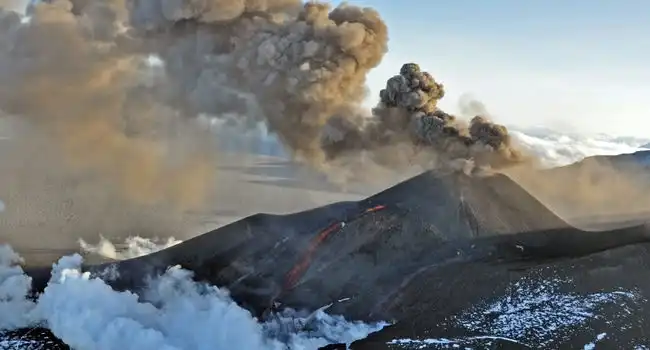
Photo Credit: Geology Hub
The deadliest volcanic eruption in history was the Laki and Grimsvotn eruption in 1783-1784. It began in southern Iceland in June 1783 with a fissure eruption of basaltic lava from the Laki fissure. This eruption was followed by the eruption of the Grimsvotn volcano in the following month. The lava flows covered the land and the poisonous gases killed thousands of people and livestock. The summer of 1783 was abnormally hot and dry, resulting in the destruction of crops, leading to famine and death.
The poisonous gases released caused respiratory problems, eye irritation, and even death in some cases. The eruption also caused a haze, known as the ‘Laki haze’, which spread across much of Europe, resulting in a decrease in global temperatures. The eruption continued until February 1784, eventually leading to the death of thousands of people and destruction of the land. The effects of the eruption still linger today, making it one of the deadliest volcanic eruptions in history.
8- Mount Vesuvius
Deaths: 14,000
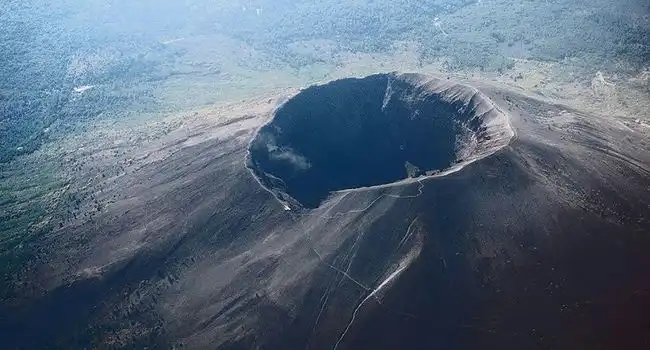
Photo Credit: Universe Today
Mount Vesuvius erupted on August 24th, 79 CE, with devastating force. The eruption was so powerful that it destroyed the cities of Pompeii and Herculaneum, burying them in ash and pumice. It was one of the most destructive and deadliest volcanic eruptions in history. The pyroclastic density currents and flows, along with the lahars, generated by the eruption, caused the death of an estimated 14,000 people. The clouds of gas and ash rose to a height of 33 kilometers, and the eruption column was visible from Rome, about 100 kilometers away.
The eruption lasted for two days and spread ash over an area of more than 100,000 square kilometers. The cities of Pompeii and Herculaneum were buried in up to 12 meters of ash and pumice, and the surrounding area was covered with a layer of volcanic ash. The cities were preserved in their entirety, providing an invaluable source of information about Roman life at the time. Mount Vesuvius continues to be an active volcano today, and its eruptions pose a significant threat to the people living in the nearby areas.
7- Mount Unzen
Deaths: 15,000
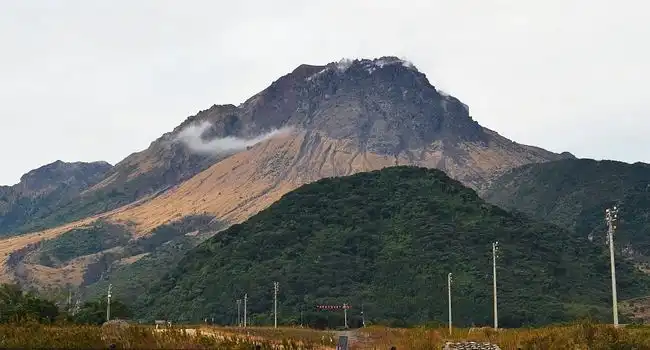
Photo Credit: Japan Guide
Mount Unzen erupted on May 21st, 1792, in one of the deadliest volcanic eruptions in history. Its pyroclastic flows and lahars killed 15,000 people, making it the deadliest volcanic eruption of the past 300 years. The eruption was triggered by a powerful earthquake that shook the area around Mount Unzen. This caused the volcano to collapse and create a massive landslide that blocked the flow of the river and caused the eruption. The eruption released massive amounts of ash, rocks and debris that spread throughout the area and caused severe damage. The pyroclastic flows destroyed several villages and killed thousands of people. The lahars, or mudflows, also caused widespread destruction and claimed even more lives. The eruption also caused a tsunami that caused more destruction and death in the coastal areas. In the aftermath, the landslide and eruption left the area in ruins and left thousands of people homeless.
6- Mount Samalas
Deaths: 18,000
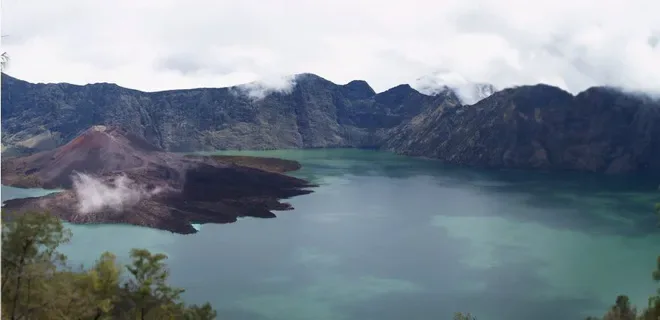
Photo Credit: Wired
Mount Samalas, located in Indonesia, is the deadliest volcanic eruption in history. It occurred in 1257 CE, killing an estimated 18,000 people. The eruption was so powerful, it collapsed the mountain’s summit and formed a caldera. Ash, pumice, and other volcanic debris were ejected into the atmosphere, reaching heights of 30 kilometers. The subsequent pyroclastic flows were so hot, they incinerated everything in their paths. The eruption also triggered a massive tsunami, which caused widespread destruction along the coasts of Sumatra and Java. The event caused global temperatures to drop by up to three degrees Celsius, affecting the climate in Europe for the next four years. The eruption also caused a volcanic winter, resulting in crop failure and famine across the world. Mount Samalas serves as a reminder of the power of Mother Nature and the devastation she can cause.
5- Santorini
Deaths: 20,000

The deadliest volcanic eruption in history occurred on the Greek Island of Santorini in 1650 B.C. The eruption destroyed the Minoan civilization and caused a massive tidal wave that devastated the nearby island of Crete. It was a massive explosion that sent a plume of ash and smoke 18 miles high and produced a tsunami that reached 150 feet in height. The resulting pyroclastic flows and ash falls buried the island of Santorini and destroyed its cities.
The eruption released an estimated 60 cubic kilometers of magma and caused a devastating blast of heat and pressure that could be felt over 160 kilometers away. Evidence suggests that the eruption was so powerful that it caused the climate of the entire Mediterranean region to cool for several years afterwards. The eruption left an enormous caldera, spanning over 9 kilometers in diameter, and today the island of Santorini is a picturesque reminder of its violent past.
4- Nevado Del Ruiz
Deaths: 23,000

On November 13, 1985, Nevado Del Ruiz, a volcano in Colombia, erupted, causing a massive lahar that destroyed the town of Armero and killed more than 23,000 people. The eruption was one of the deadliest in history. The seismic activity that preceded the eruption was not detected, resulting in a lack of warning. Hot gas and debris rushed down the mountainside, melting snow and ice, and forming a fast-moving lahar that buried Armero. Survivors described the lahar as a wall of mud and water that moved at incredible speed. The destruction was swift and devastating, with entire neighborhoods becoming engulfed in mud and debris. The volcanic eruption and subsequent lahar left a lasting impact on the region, with the town of Armero never being rebuilt.
3- Mount Pelee
Deaths: 30,000

Photo Credit: Devastating Disasters
Mount Pelee erupted on May 8th, 1902, devastating the nearby town of Saint Pierre. It was the deadliest volcanic eruption in history, with an estimated 30,000 fatalities. The eruption began with a series of earthquakes and tremors on April 5th, followed by a huge explosion on May 4th. The explosion released a hot cloud of gas and ash, which travelled at speeds of up to 100 mph. This eruption column reached heights of up to 30,000 feet.
The next day, a huge pyroclastic flow descended on the city of Saint Pierre, burning everything in its path. On May 8th, Mount Pelee erupted again, this time with an even more powerful eruption column. This time the pyroclastic flow was even hotter, reaching temperatures of up to 1000°C, and travelling at speeds of up to 300 mph. It devastated the city and its surroundings, killing almost everyone in its path. It was one of the deadliest volcanic eruptions in recorded history.
2- Krakatoa
Deaths: 36,000
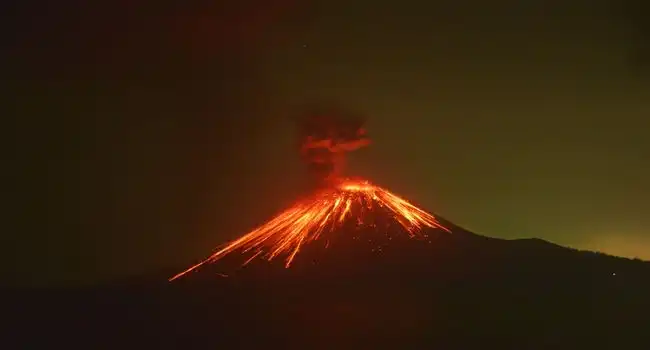
Photo Credit: CNBC Tv18
Krakatoa violently exploded on 27th August 1883, spewing an immense cloud of ash and smoke into the atmosphere. The eruption triggered a series of immense shockwaves, leading to a devastating tsunami. Pyroclastic flows devastated the surrounding islands, killing more than 36,000 people. Ash and dust spread around the world, causing temperatures to drop and creating spectacular sunsets. Krakatoa’s immense energy sent volcanic debris hurtling miles away, destroying almost everything in its path. The heat was so intense, it melted the rocks, creating a rain of red-hot volcanic debris.
The eruption was heard thousands of miles away and caused the loudest sound ever recorded on Earth. The ash and dust cloud blocked out the sun for days, with the sky turning dark and eerie. The atmospheric pressure dropped, causing a drop in global temperatures. Acid rain followed, destroying crops and leaving hundreds of thousands of people without food. The eruption of Krakatoa was one of the deadliest volcanic eruptions in history, with its devastating impacts still being felt today.
1- Mount Tambora
Deaths: 100,000
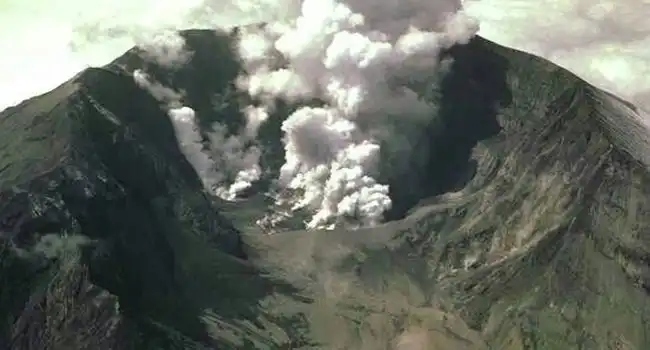
Photo Credit: Earth Science Central
On April 10th 1815, Mount Tambora erupted in Indonesia. It was the most powerful volcanic eruption in recorded history. The eruption was so loud it could be heard over 1,000 miles away. It sent an ash column over 25 miles into the sky. The ash spread over a large area, blocking out the sun and causing a global temperature drop. The resulting famine and disease killed an estimated 71,000 people. Pyroclastic flows, and powerful clouds of hot gas and rock, destroyed over 12,000 homes and villages. Sulfur dioxide and other gases caused acid rain, destroying crops and livestock. The eruption caused a tidal wave that killed an additional 10,000 people. Mount Tambora left its mark on history, becoming the deadliest volcanic eruption in history.


